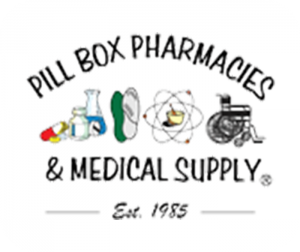Does your snoring raise the dead—or at least prompt a swift kick? Has your partner or spouse said that you gasp or snort, or make choking sounds while asleep? Are you finding yourself way too drowsy during the day, despite getting a “good night’s sleep”?
These can be major signs of a common disorder called sleep apnea. Other signs may include:
- Waking often to urinate
- Morning headaches
- Memory or concentration problems
- Irritability, depression, or mood swings
- Dry mouth or sore throat upon awakening1
With sleep apnea, you breathe shallowly or have regular pauses in your breathing that can last from a few seconds to minutes. This may occur when the airway collapses or becomes blocked from extra tissue or other causes. Breathing pauses can happen many times a night, often moving you out of deep sleep into light sleep.2
News flash: your body and brain need oxygen—and lots of it! Sleep apnea can be serious. It isn’t something to ignore. The problem is, lots of people don’t know they have it because there is no simple test to detect the condition. And your doctor can’t confirm it during a routine office visit.2
Feeling tired a lot may be just the tip of the proverbial iceberg. Sleepiness can lead to work-related or driving accidents. And, if left untreated, sleep apnea can also increase the risk of:
- High blood pressure
- Heart attack
- Stroke
- Obesity
- Diabetes
- Heart failure
- Irregular heartbeats (arrhythmias)2
Suddenly that signature snoring seems a little less funny, doesn’t it? If you have signs of sleep apnea, have a conversation with your physician. You might need a sleep study to confirm a diagnosis. Snoring doesn’t always mean you have sleep apnea.
A sleep study tests how well you sleep and how your body responds to any problems with sleep. Among other things, it measures the amount of oxygen in your blood, air movement in and out of your nose, and chest movements. It also records brain activity, eye movements, heart rate, and blood pressure. This study is often done in a sleep center or sleep lab.3
If you are diagnosed with sleep apnea, many things can help. Sometimes just dropping some pounds, quitting smoking, and avoiding alcohol or sedatives can make a difference. Also, sleeping on your side instead of your back can help keep your throat open. Ask your doctor whether allergy medicines or nasal sprays might help keep your nasal passages more open at night.4 Remember—I can help you find products in our store.
>If you need treatment, a sleep doctor may recommend one of several options. These include a custom-made oral appliance to move your jaw forward, a device with a one-way nasal valve called Provent Therapy,5 or a breathing device called continuous positive airway pressure (CPAP). These all work in slightly different ways. Some people also benefit from surgery to widen breathing passages.4 If one approach doesn’t work well, be sure to follow up with your doctor. Of course, I’ll also answer any questions I can.
Sweet dreams!
Sources
- NIH: National Heart, Lung, and Blood Institute: “What Are the Signs and Symptoms of Sleep Apnea?” Available at: http://www.nhlbi.nih.gov/health/health-topics/topics/sleepapnea/signs.html Accessed February 26, 2013.
- NIH: National Heart, Lung, and Blood Institute: “What Is Sleep Apnea?” Available at: http://www.nhlbi.nih.gov/health/health-topics/topics/sleepapnea/ http://www.nhlbi.nih.gov/health/health-topics/topics/sleepapnea/ Accessed February 26, 2013.
- NIH: National Heart, Lung, and Blood Institute: “How Is Sleep Apnea Diagnosed?” Available at: http://www.nhlbi.nih.gov/health/health-topics/topics/sleepapnea/diagnosis.html Accessed February 26, 2013.
- NIH: National Heart, Lung, and Blood Institute: “How Is Sleep Apnea Treated?” Available at: http://www.nhlbi.nih.gov/health/health-topics/topics/sleepapnea/treatment.html Accessed February 26, 2013.
- Sleep Diagnosis and Therapy: “Provent Nasal EPAP: A Skeptic Turns Believer.” Available at: http://www.sleepdt.com/provent-nasal-epap-a-skeptic-turns-believer/ Accessed February 26, 2013.

